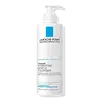La Roche-Posay Toleriane Hydrating Gentle Cleanser Versus Paula's Choice Resist Optimal Results Hydrating Cleanser
What's inside
What's inside
 Key Ingredients
Key Ingredients

No key ingredients
 Benefits
Benefits

 Concerns
Concerns

 Ingredients Side-by-side
Ingredients Side-by-side

Water
Skin ConditioningCaprylic/Capric Triglyceride
MaskingDecyl Glucoside
CleansingGlycerin
HumectantPEG-20 Methyl Glucose Sesquistearate
EmulsifyingPPG-20 Methyl Glucose Ether
Skin ConditioningMethyl Gluceth-20
HumectantGlyceryl Stearate
EmollientStearyl Alcohol
EmollientPolyacrylamide
Camellia Oleifera Leaf
MaskingChamomilla Recutita Flower Extract
MaskingSapindus Mukorossi Peel Extract
Skin ConditioningMethyl Glucose Sesquistearate
EmollientC13-14 Isoparaffin
EmollientLaureth-7
EmulsifyingXanthan Gum
EmulsifyingDisodium EDTA
Citric Acid
BufferingCaprylyl Glycol
EmollientHexylene Glycol
EmulsifyingPhenoxyethanol
PreservativeEthylhexylglycerin
Skin ConditioningWater, Caprylic/Capric Triglyceride, Decyl Glucoside, Glycerin, PEG-20 Methyl Glucose Sesquistearate, PPG-20 Methyl Glucose Ether, Methyl Gluceth-20, Glyceryl Stearate, Stearyl Alcohol, Polyacrylamide, Camellia Oleifera Leaf, Chamomilla Recutita Flower Extract, Sapindus Mukorossi Peel Extract, Methyl Glucose Sesquistearate, C13-14 Isoparaffin, Laureth-7, Xanthan Gum, Disodium EDTA, Citric Acid, Caprylyl Glycol, Hexylene Glycol, Phenoxyethanol, Ethylhexylglycerin
 Reviews
Reviews

Ingredients Explained
These ingredients are found in both products.
Ingredients higher up in an ingredient list are typically present in a larger amount.
Caprylyl Glycol is a humectant and emollient, meaning it attracts and preserves moisture.
It is a common ingredient in many products, especially those designed to hydrate skin. The primary benefits are retaining moisture, skin softening, and promoting a healthy skin barrier.
Though Caprylyl Glycol is an alcohol derived from fatty acids, it is not the kind that can dry out skin.
This ingredient is also used as a preservative to extend the life of products. It has slight antimicrobial properties.
Learn more about Caprylyl GlycolDisodium EDTA plays a role in making products more stable by aiding other preservatives.
It is a chelating agent, meaning it neutralizes metal ions that may be found in a product.
Disodium EDTA is a salt of edetic acid and is found to be safe in cosmetic ingredients.
Learn more about Disodium EDTAGlycerin is already naturally found in your skin. It helps moisturize and protect your skin.
A study from 2016 found glycerin to be more effective as a humectant than AHAs and hyaluronic acid.
As a humectant, it helps the skin stay hydrated by pulling moisture to your skin. The low molecular weight of glycerin allows it to pull moisture into the deeper layers of your skin.
Hydrated skin improves your skin barrier; Your skin barrier helps protect against irritants and bacteria.
Glycerin has also been found to have antimicrobial and antiviral properties. Due to these properties, glycerin is often used in wound and burn treatments.
In cosmetics, glycerin is usually derived from plants such as soybean or palm. However, it can also be sourced from animals, such as tallow or animal fat.
This ingredient is organic, colorless, odorless, and non-toxic.
Glycerin is the name for this ingredient in American English. British English uses Glycerol/Glycerine.
Learn more about GlycerinWater. It's the most common cosmetic ingredient of all. You'll usually see it at the top of ingredient lists, meaning that it makes up the largest part of the product.
So why is it so popular? Water most often acts as a solvent - this means that it helps dissolve other ingredients into the formulation.
You'll also recognize water as that liquid we all need to stay alive. If you see this, drink a glass of water. Stay hydrated!
Learn more about Water